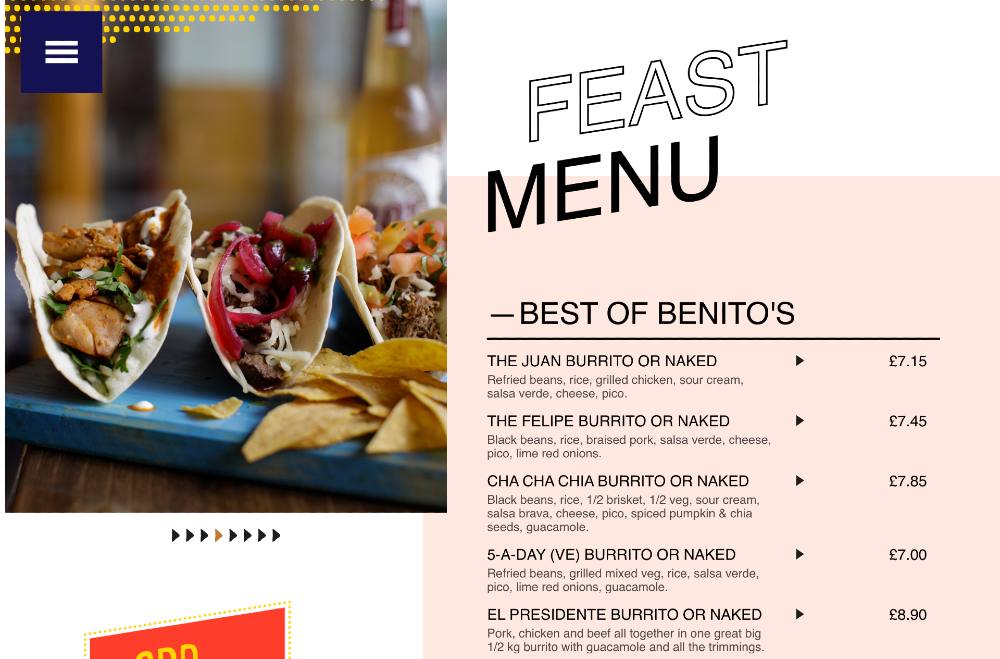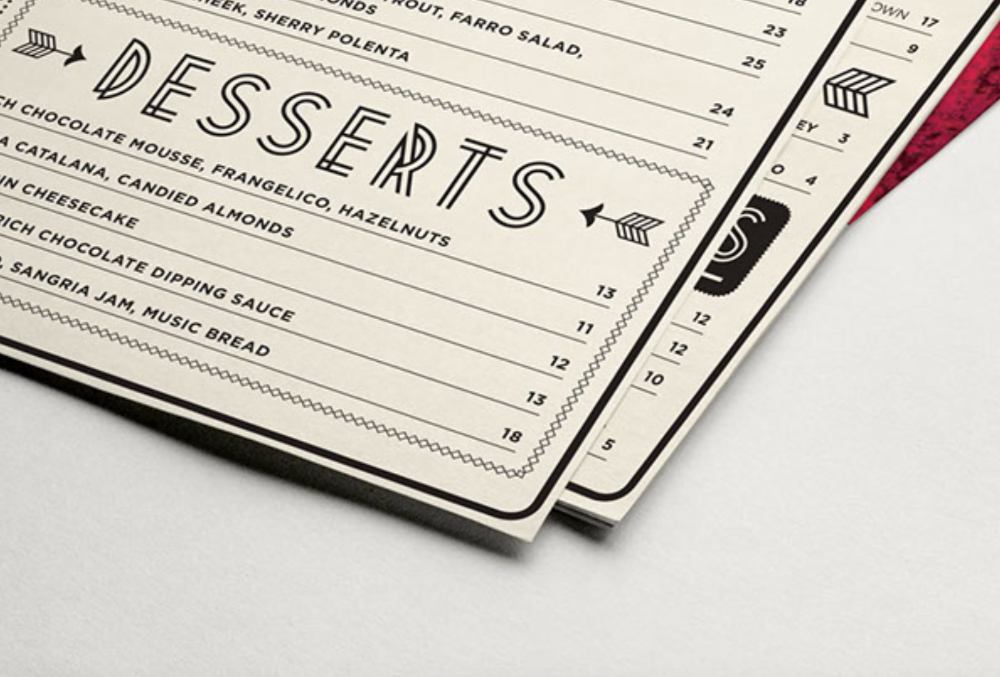9 Essential Restaurant Menu Design Tips
“The mind knows not what the tongue wants.” These are the famous words of Howard Moskowitz, a psychophysicist who mastered Prego’s spaghetti sauce based on people’s preferences and trends. And true enough, Moskowitz was true. People don’t know what they want until they’ve tasted it. This is why restaurateurs create a restaurant menu design that subliminally tells people what to order.
Here’s how you can engineer your restaurant menu to get consumers to spend more and leave your restaurant happy and full.
1. Limit Menu Items

Some diners prefer a set menu because it takes the selection responsibility off their shoulders. However, some snotty patrons would prefer a well-designed restaurant menu with a good viand selection. Take note, however, to keep dish items limited to seven or eight in every category. Try not to overwhelm customers with too many options. Here’s an example of a Venetian restaurant with an average of four options in most sections.
2. Use the Golden Triangle on High-Margin Items

Menu engineering is how marketers create the layout for the restaurant menu design. One goal of menu engineering is to put high-priced items front and center. First and foremost, take note of how consumers scan a menu. They typically start from the top left-hand corner, moving horizontally to the right, scanning down from the left side again.
Another restaurant menu design trick is the “Golden Triangle.” This strategy means including your high-margin items or best-sellers in the Golden Triangle. This means starting at the center of the page, up to the top right to the top left corner. Check out this example.
3. Give Menu Items Ethnic Labels

Charles Spence, an Oxford experimental psychologist, says the name of a dish affects diners. For instance, if you open an Italian restaurant, giving dishes Italian names gives the impression that the restaurant is authentic. Here’s Benito’s menu example with Mexican names and descriptions underneath. For a Mexican restaurant, they get extra brownie points from diners.
Additionally, giving dishes a descriptive language appeals to more consumers. Marks & Spencers presented their chocolate pudding as if someone was describing the pudding to a blind person. Check out the video here.

Another example is also Giraffe’s tempting choice of adjectives for their menu items. For instance, the words “warm and filling” for their hummus are enough to make you crave the dish.
4. Choose a Typeface Suitable for Service Standards

According to research, the visual cues on your restaurant menu design, like fonts, impact the consumer’s buying decision. For instance, restaurants with fancy fonts on gold menu paper are perceived to have a more upscale service. On the other hand, heavier fonts are linked to “anticipated service quality.”
On another note, an italicized font also means the restaurant offers a more top-rated service. As with any other marketing collateral, selecting the right typeface has design psychology behind it. Overall, choosing the right typeface and font should represent the quality or service standards of your restaurant. This template with an elegant script font is apt for the fine dining service.
5. Don’t Overwhelm with Photos

Always remember that particular food photography doesn’t appeal to everyone. The disadvantage of using photos on your restaurant menu is it sets the bar high. And when restaurants don’t deliver according to how the images look, consumers get disappointed. To balance it out, make sure you use photos sparingly. If you really have to use photos, ensure that they are of topnotch quality.
Experts say that a restaurant menu design with photos should only be used for fast-food chains or family-style restaurants. Snobby diners might find photos on high-end restaurants shabby. Here’s an example of a Filipino restaurant menu design for its shared platters. Although the photos seem to dominate the menu, the quality makes up for the scarce texts.
6. Enclose High-Priced Dishes in Boxes

Enclosing your high-priced menu items gives the impression that the dishes are exceptional to be in the boxes. You can put your high-margin viands, best-sellers, or seasonal items in the boxes. Sporadic boxes on the menu let your dishes stand out. It prioritizes their space on the menu, subliminally telling consumers that they’re worth ordering.
7. Display Food in Motion

Our eyes pique food cravings, while our brain partly tastes the food whenever we see them on the menu. Consumers find food in motion extremely appealing. From oozing cheese to runny egg yolks, creating movement in food photography is more attractive. Make your diners’ mouths water the moment they look at the photos.
8. Omit Currency Signs

Including currency signs on your menu reminds consumers of how much they’re spending. A study was conducted on how menu design with various price presentations affected consumers’ purchasing decisions.
One group was presented with a numerical format with a dollar sign, one group was presented without a dollar sign, and the last group saw text-based prices. The study showed that the first group that saw the numerical format spent more than the other two groups.
9. Make Colors Represent the Restaurant Theme

Colors are crucial in your restaurant menu design because they evoke feelings. For instance, light colors like yellow, beige, or white emanate a relaxed atmosphere, which is fitting for bistros and cafes. Warmer and brighter colors such as red and orange imply excitement and stimulation, making them perfect for fast-food chains, casual eateries, and ice cream shops. Here’s an example of a fast-casual restaurant menu. The red-and-yellow combination stimulates hunger and reminds you of comfort food, which, in this case, is chicken wings.
Why You Need a Professional Graphic Designer for Your Menu Design
The restaurant menu design is a powerful marketing tool that influences how consumers order. The colors, fonts, marketing graphics, and layout should be engineered in such a way that tease the customers but effectively nudges them as well. Apart from your logo, the menu design is another conduit between you and the diners. That’s why it’s essential not to do the designing yourself.
Skimping on the restaurant menu design will mean disaster for your business. One color or structure out of place, and it could mean failure for your restaurant. Moreover, always hire the services of professional graphic designers for your menu. They know color psychology and menu design trends to create one that’s appealing to hungry diners.
Hiring professional graphic designers doesn’t have to cost an arm and a leg, though. Design Doctor has a subscription-based model that provides unlimited designs for a flat monthly rate. For as low as $329 a month, your design needs, from restaurant menu creation to restaurant marketing, are taken care of.








